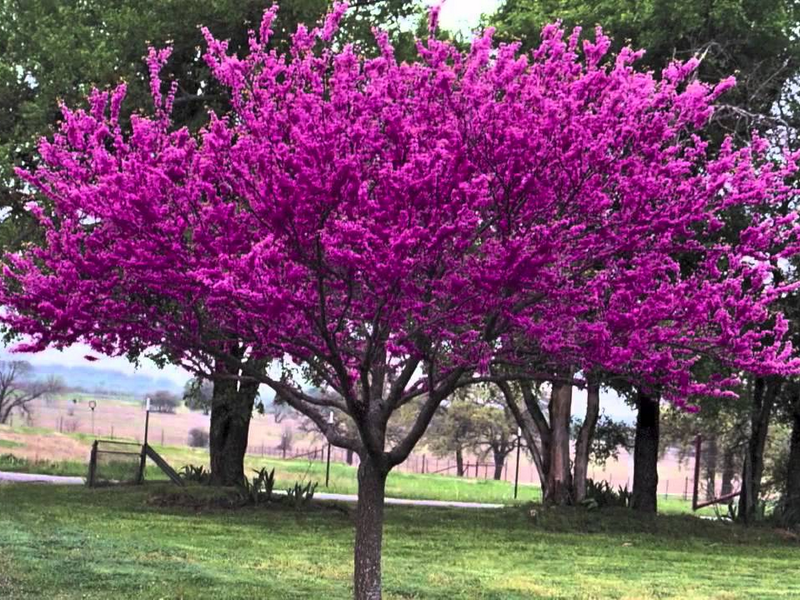Eastern Redbud Tree
Cercis canadensis
Click here to download a PDF of this plant information page (for printing).

Sun Exposure: Part Sun, Part Sun
Season of Interest: Spring, Fall
Bloom Time: March
Bloom Color: Pink to Red
Height: 20 to 30 ft.
Spread: 15 to 25 ft.
Spacing: 25 ft.
Water Needs: Average
Maintenance: Prune for shape
Soil Type: Clay, Loam, Sandy
Soil pH: Acidic, Neutral, Alkaline
Soil Drainage: Well drained
Pests: Borers, Japanese beetles
Diseases: Canker, Leafspot, Blight
Wildlife: Bees, Buterflies, Birds

Description:
Eastern redbud is a deciduous, ornamental tree in the Fabaceae or pea family. Prized for its vibrant, red/pink flowers that welcome the warmer months, the Eastern Redbud marks the change from winter to spring. In fact, it’s one of the first trees to bloom each year and it blooms on old wood, offering a breath of fresh air after the cold season. Often called a Judas tree, it is a smaller tree with a nearly flat or rounded crown that is often found growing beneath taller trees. But despite its delicate appearance, the Eastern Redbud is incredibly strong and is adaptable to most soil types. It has a rounded, dense canopy, unique branching, and four seasons of color, with leaves that change throughout the season. Adding to its versatility is the Eastern Redbud’s ability to fit into smaller landscapes. For more information see:
plants.ces.ncsu.edu/plants/cercis-canadensis
Care and Growing Tips:
Eastern redbuds grow well in full sun to part shade. Full sun typically encourages optimal flowering, but providing some shade is recommended in hot climates. This tree is not picky about soil type and will tolerate sandy and clay soils with a range of pH levels. The soil should remain consistently moist and does not need to be overly fertile; moderate fertility is fine. Most important, the soil must drain well.
Eastern redbuds typically need watering about once a week, whenever the soil is dry at a depth of 2 to 3 inches. You may have to water more frequently during dry spells. As with many Fabaceae (pea) species, this tree can harness nitrogen from the air through a process called nitrogen fixation. Unless abnormal growth or soil tests show otherwise, you should not need to fertilize it.